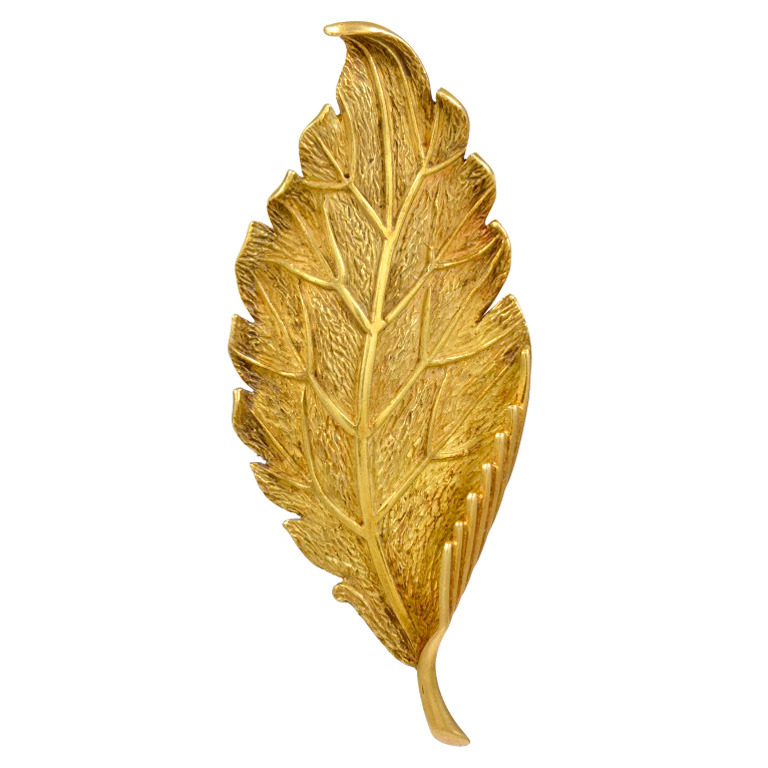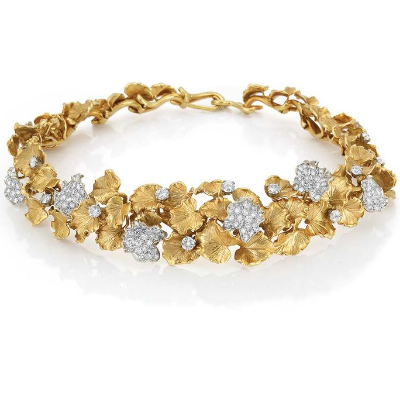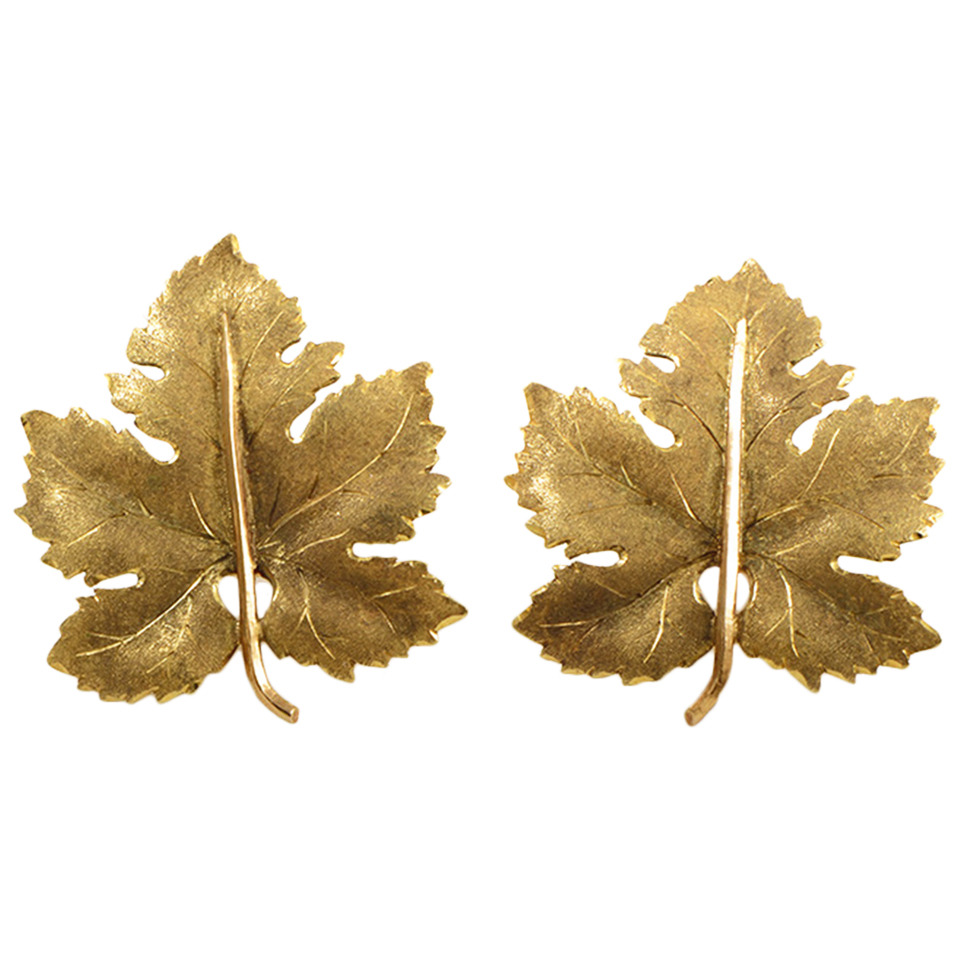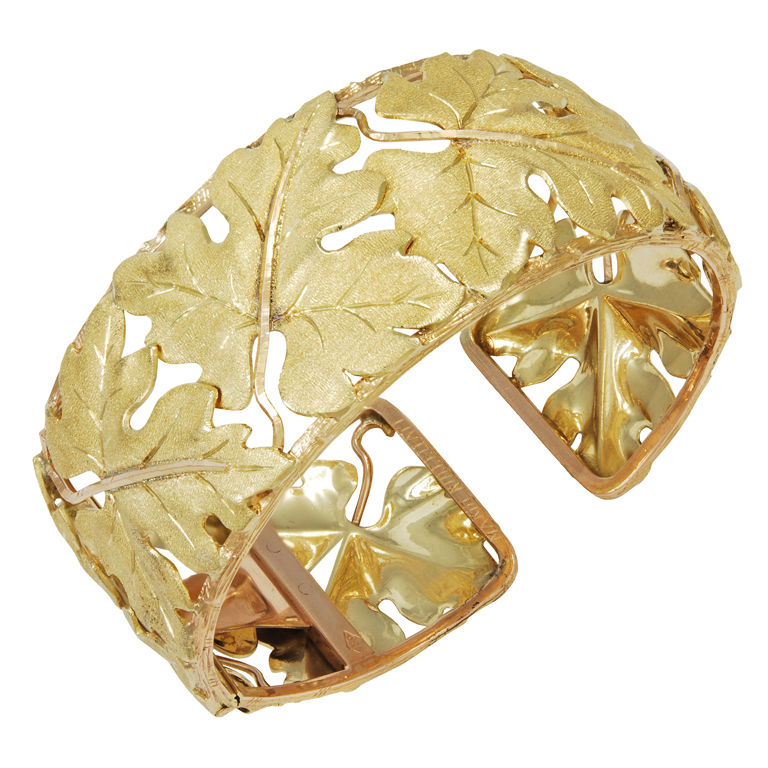Happy Birthday Tiffany & Co.
/On this day in 1837, Tiffany and Co. was founded by Charles Lewis Tiffany. In honor of this American jewelry icon I thought we would celebrate with a few beautiful pieces that are part of the MET museum's (Metropolitan Museum of Art) collection in New York.
Tiffany & Co. (1837–present) ca. 1890. Made in New York, New York, United States. Gold, diamond, and enamel. Photo courtesy of the MET Museum.
"Related to the extraordinary enameled orchids displayed by Tiffany & Company at the 1889 Exposition Universelle in Paris, this flower pin with a textured gold stem and diamond-set leaves is enhanced by a single diamond dewdrop set amid the realistically rendered purple enamel petals. The gentle arc of its stem and the naturalistic blossom reflect the Art Nouveau style, which inspired jewelers toward the end of the century. The enameled orchids were designed by Paulding Farnham (1859–1927) and were exhibited at Tiffany's New York showroom prior to their departure for Paris. The New York Sun reported on March 17, 1889, that the jewels attracted more attention "than any flower show, display of orchids, or any other of nature's beauty ever brought together in this city."
Louis Comfort Tiffany (American, New York 1848–1933 New York). ca. 1904. Gold, silver, platinum, black opals, boulder opals, demantoid garnets, rubies, enamel. Photo courtesy of the MET Museum.
"After Charles Lewis Tiffany, founder of Tiffany & Company, died in 1902, his son Louis Tiffany was able to pursue artistic jewelry without reticence. He began working on this pursuit in 1902 to prepare himself for the St. Louis fair of 1904, where he exhibited twenty-seven pieces of jewelry. Tiffany Furnaces initially produced the jewelry, but after 1907 Tiffany & Company acquired Louis's artistic jewelry department. This hair ornament is one of the most extraordinary pieces of Tiffany's surviving jewelry, incorporating a remarkably realistic rendering of two dragonflies resting on two dandelion seedballs. Tiffany designed the hair ornament for Louisine W. Havemeyer, who, with her husband Henry Osborne Havemeyer were among Tiffany's most enlightened and devoted patrons. The hair ornament was known only from archival photographs in the collection of the Tiffany & Company Archives until Louisine's great-granddaughter brought it to the Museum's attention. The piece epitomizes his earliest jewelry designs, which were based directly on modest forms in nature, such as field flowers and wild fruit, as well as his affinity for enameling and semiprecious stones with unusual colors. The dragonflies rest on dandelion seedballs, one of which is shown partially blown away, underscoring the fragility of nature. Highly skilled artisans conveyed the transparency of the insects' wings through delicate metalwork filigree. The temporal quality is revealed in the subject: dragonflies rest in one place for mere seconds before flitting away; dandelions disperse into thousands of airborne seeds with the gentlest of breezes."
Louis Comfort Tiffany (American, New York 1848–1933 New York)
Date: ca. 1904. Opals, gold, enamel. Photo Courtesy of the MET Museum.
"This necklace, composed of grape clusters and leaves, is one of the earliest known examples of jewelry designed by Louis Comfort Tiffany. Tiny black opals represent the clusters of fruit, and finely executed enameling in shades of green on gold forms the delicate leaves. Opals appealed to Tiffany for their fiery glow, reminiscent of his vases in Favrile glass. The asymmetry of the design and its organic shapes are entirely in keeping with his passion for natural forms. This necklace was among the twenty-seven pieces that Tiffany made for the Louisiana Purchase Exposition in Saint Louis in 1904. It has been altered twice since its original conception, first by the addition of grape clusters on either side of the central pendant and later by the addition of a double bar-link chain. These changes were probably overseen by Tiffany himself, who is believed to have presented the necklace to his nurse and later companion, Sarah E. Hanley."



































